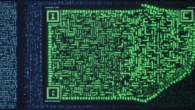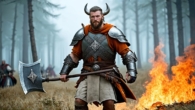
Is there a future for NFTs
NFTs, or non-fungible tokens, have been the talk of the town lately. They’re a new form of digital asset that represents ownership of unique items such as artwork, music, and even collectibles like sports memorabilia. But with all the hype surrounding NFTs, is there really a future for them? In this article, we’ll explore both the pros and cons of NFTs to help you decide if they have a place in your digital portfolio.
Pros of NFTs
1. Unique Ownership
One of the biggest advantages of NFTs is their ability to represent unique ownership. Unlike cryptocurrencies, which are interchangeable and have no inherent value, NFTs are one-of-a-kind digital assets that can’t be replaced or duplicated. This makes them ideal for items like art or music, where the originality of the work is what gives it value.
2. Fractional Ownership
NFTs also allow for fractional ownership of digital assets. This means that you don’t have to buy an entire piece of art or music album to own a part of it. Instead, you can purchase a small percentage of the asset and still enjoy its benefits.
3. Liquidity
Another advantage of NFTs is their liquidity. Because they are traded on blockchain platforms like OpenSea and Rarible, they can be bought and sold at any time, making them a valuable investment for those looking to diversify their portfolio.
4. Artistic Expression
Finally, NFTs allow artists to express themselves in new ways by creating unique digital assets that can’t be replicated. This opens up a whole new world of possibilities for artistic expression and creativity.
Cons of NFTs
1. Valuation
One of the biggest challenges facing NFTs is their valuation. Currently, there is no clear way to determine the value of an NFT, making it difficult for buyers to make informed decisions. This lack of standardization could lead to a bubble in the market and cause prices to fluctuate wildly.
2. Security Risks
Another potential downside of NFTs is their security risks. Because they are stored on blockchain platforms, they are vulnerable to hacking and other forms of cyber attack. This could lead to the loss of valuable assets or even identity theft.
3. Limited Use Cases
Finally, NFTs have limited use cases beyond art and music. While there are some examples of NFTs being used in other industries like sports and gaming, their potential applications are still relatively limited compared to other forms of digital assets.
Case Studies and Personal Experiences
One real-life example of the success of NFTs is the sale of the world’s first piece of AI art by a human artist named Obvious at Christie’s in May 2018. The artwork, called “Portrait of Edmond de Belamy,” was created using an algorithm and sold for $432,500. This marked the beginning of NFTs as a form of digital art and paved the way for their use in other industries.
Another example is the sale of the famous “CryptoKitties” game, which was launched on Ethereum in 2017. The game allowed users to breed and sell unique digital cats that were stored on the blockchain. While the craze for CryptoKitties has since died down, it demonstrated the potential of NFTs as a form of entertainment and gaming.
In addition, many artists have started using NFTs as a way to monetize their work. For example, musician Grimes sold a collection of NFTs that included digital art, music, and even a virtual concert ticket for $5.8 million in March 2021. This demonstrates the potential of NFTs as a new form of revenue stream for artists.
Comparing NFTs to Other Forms of Digital Assets
To better understand the future of NFTs, it’s important to compare them to other forms of digital assets like cryptocurrencies and traditional art. While all of these forms of assets have their own unique advantages and disadvantages, there are some key differences between them.
Cryptocurrencies, like Bitcoin and Ethereum, are interchangeable and have no inherent value beyond the demand for them in the market. They can be used for transactions or as a store of value, but they don’t represent ownership of unique items like NFTs do.
Traditional art, on the other hand, is one-of-a-kind and has been valued based on factors such as rarity, condition, and artistic significance. However, it can be difficult to verify the authenticity of traditional art, making it vulnerable to counterfeiters and fraudsters.

NFTs, meanwhile, represent unique ownership of digital assets like artwork or music, and their value is determined by factors such as rarity, demand, and artistic significance. They also allow for fractional ownership and can be traded on blockchain platforms like OpenSea and Rarible.
FAQs
Q: What are NFTs?
A: NFTs, or non-fungible tokens, represent unique ownership of digital assets such as artwork, music, and collectibles like sports memorabilia.
Q: What are the pros and cons of NFTs?
A: The pros include unique ownership, fractional ownership, liquidity, and artistic expression. The cons include valuation challenges, security risks, and limited use cases.
Q: What is a real-life example of the success of NFTs?
A: One real-life example is the sale of the world’s first piece of AI art by a human artist named Obvious at Christie’s in May 2018.
Q: How do NFTs compare to other forms of digital assets like cryptocurrencies and traditional art?
A: Cryptocurrencies are interchangeable and have no inherent value, while traditional art is one-of-a-kind and has been valued based on factors such as rarity and artistic significance. NFTs represent unique ownership of digital assets and allow for fractional ownership and trading on blockchain platforms.
Q: What are some potential downsides of NFTs?
A: Valuation challenges, security risks, and limited use cases beyond art and music are some potential downsides of NFTs.
Q: Can NFTs be used in other industries like sports and gaming?
A: While there are some examples of NFTs being used in these industries, their potential applications are still relatively limited compared to other forms of digital assets.
Q: What is the summary of this article?
In conclusion, while NFTs may not have a clear future at the moment, they do offer unique advantages such as fractional ownership and liquidity that could make them attractive to investors looking for new ways to monetize their assets. However, there are also potential downsides like valuation challenges and limited use cases beyond art and music that need to be addressed. As with any new technology or form of digital assets, it’s important to carefully consider the pros and cons before making a decision about whether NFTs are the right fit for your needs.







